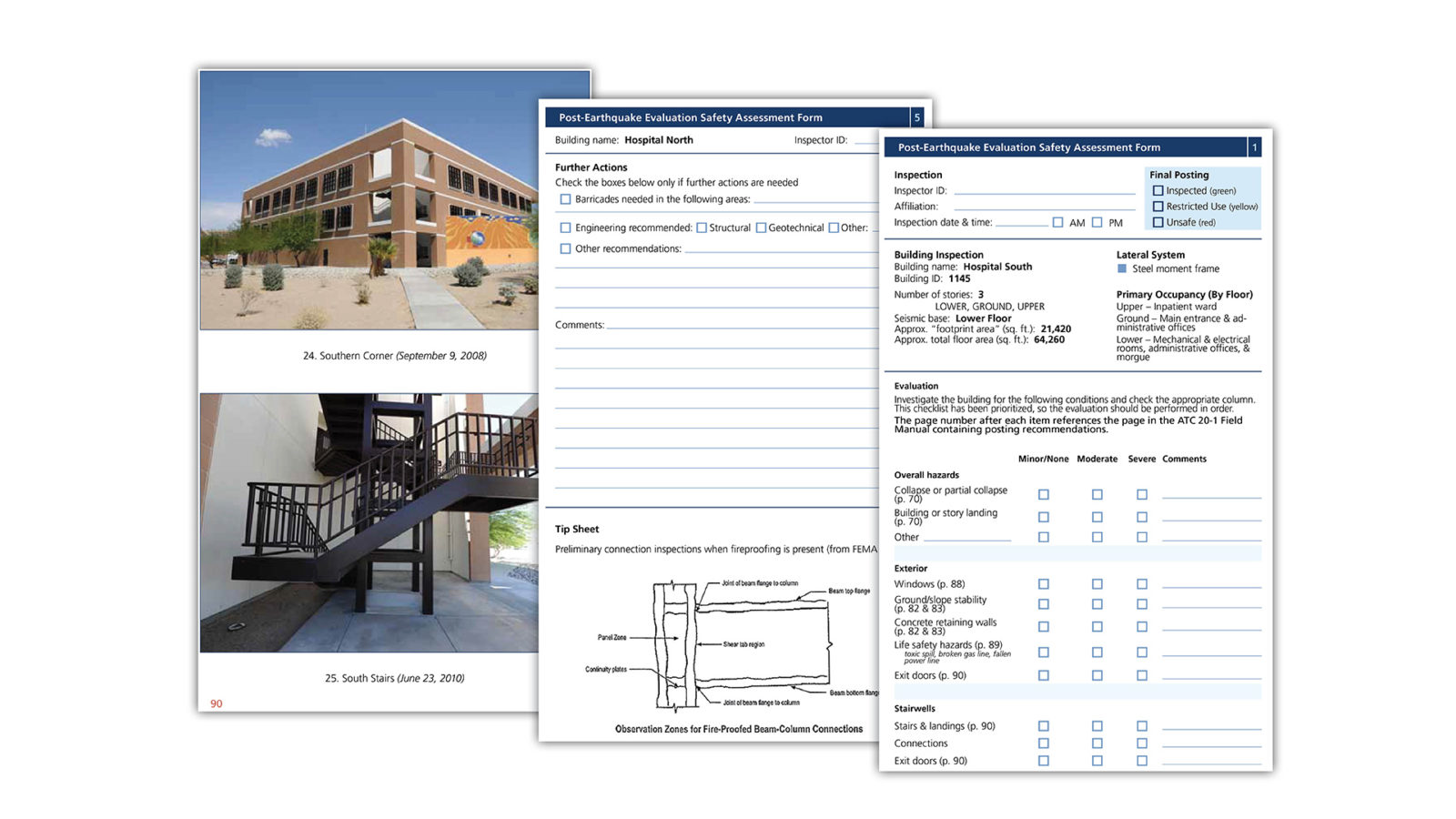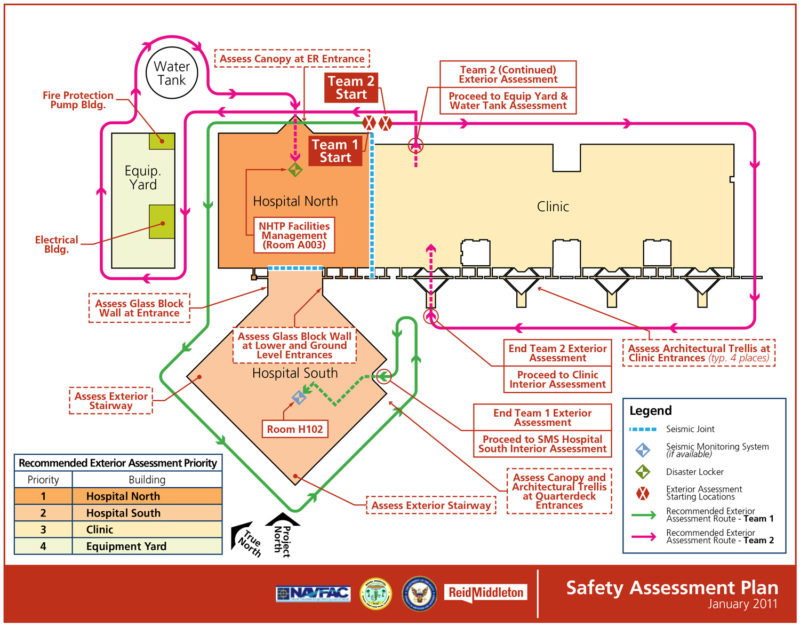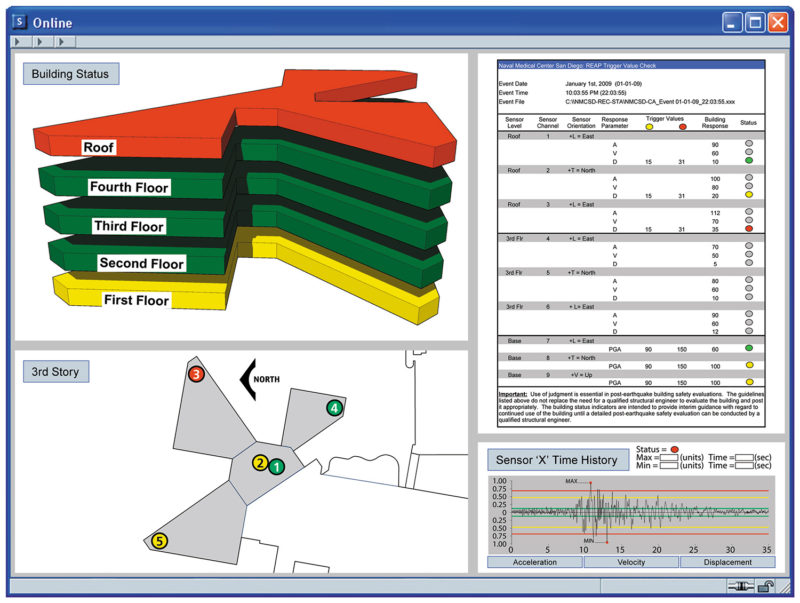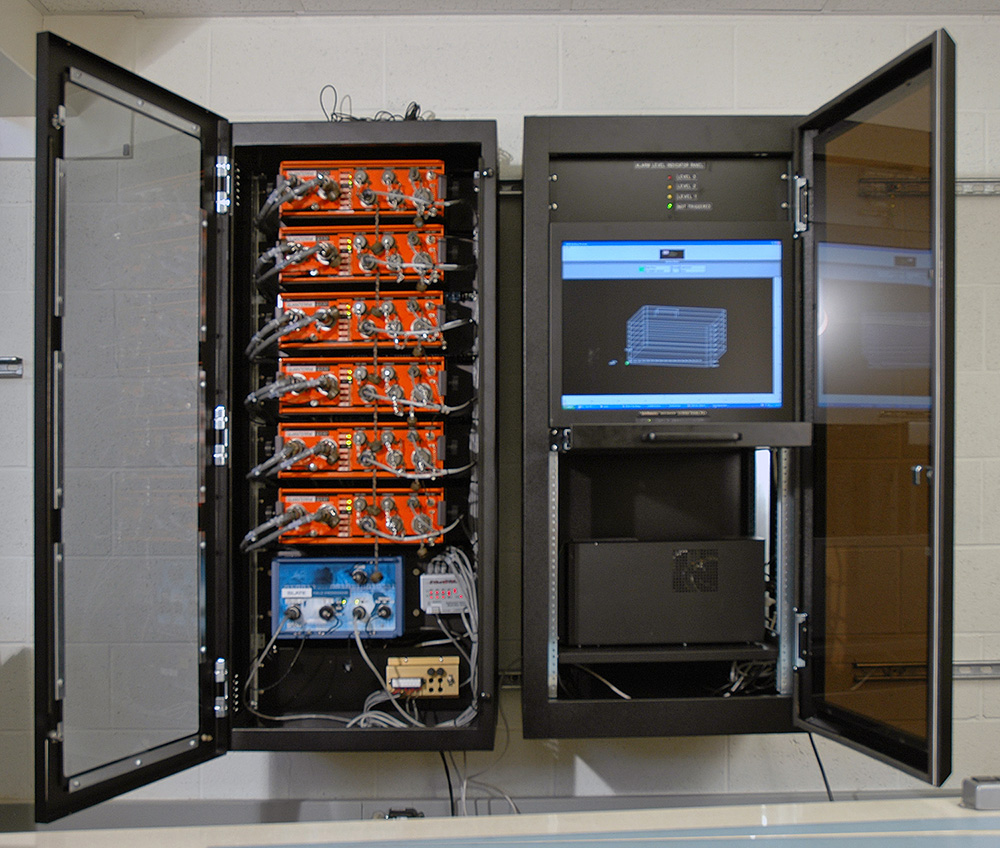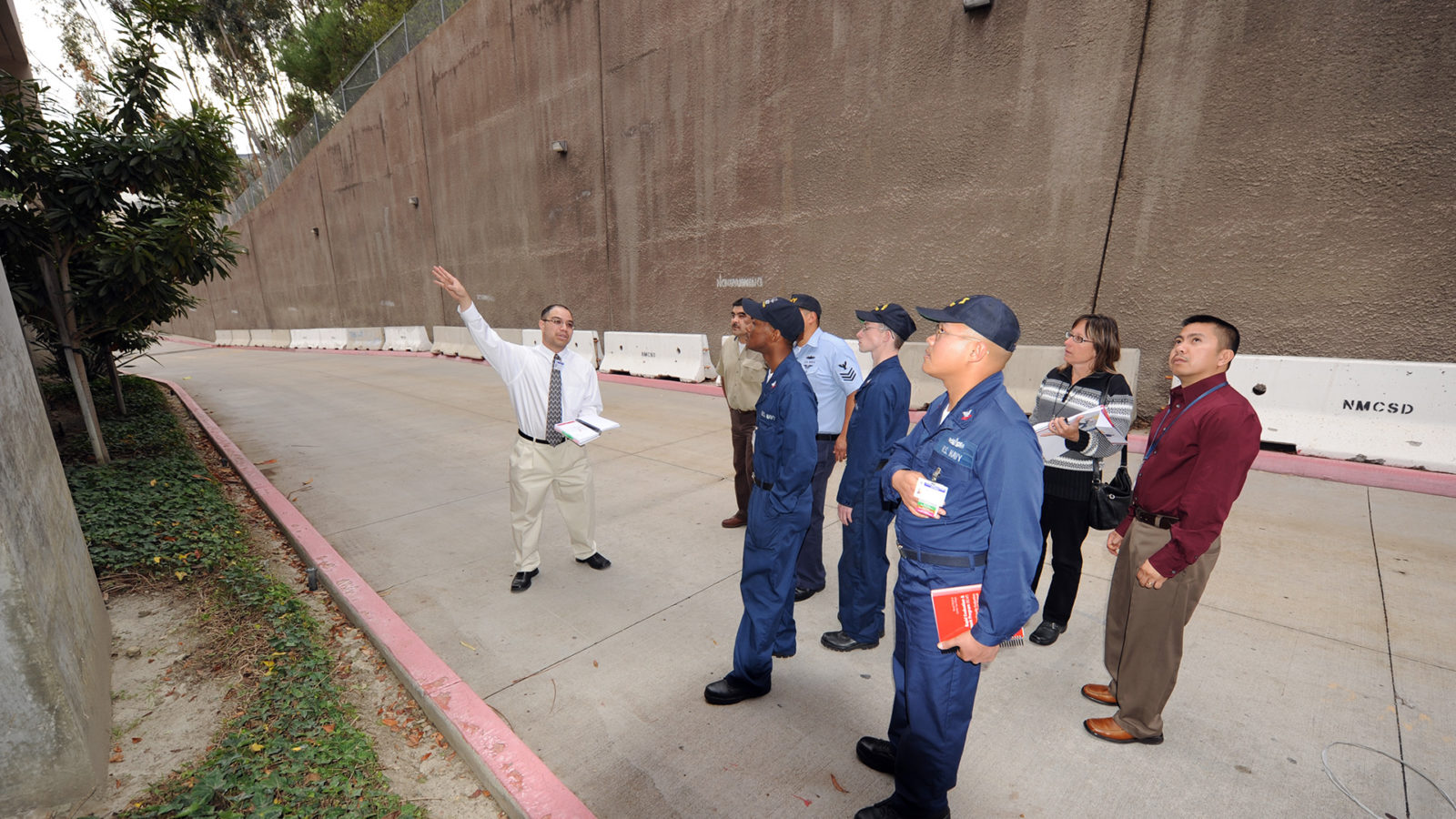
Rapid Evaluation & Assessment
Program (REAPTM)
Uncertainty Can Lead to Poor Decisions
Imagine you manage a large hospital, business, skyscraper, or laboratory and an earthquake just shook your facility.
Do you evacuate once the shaking stops?
Whether it’s the safety of patients, staff, and workers or the vast amount of money that would be lost if operations were interrupted or shut down, you must decide on the safety of your facility. If you’re unsure or don’t have the proper tools to make informed decisions, severe consequences could result.
Reid Middleton developed the Rapid Evaluation & Assessment Program (REAP) to empower facility managers and reduce this dramatic, but very real uncertainty, so they can make informed decisions on the structural integrity of their facilities until a licensed structural engineer can be onsite to investigate.
Naval Hospital Bremerton (NHB) was the first military hospital to receive the tailored post-earthquake evaluation program (REAP) with a fully operating real-time seismic monitoring system, and then seismically upgraded with fluid viscous dampers using performance-based criteria. Similar programs were then implemented at Naval Medical Center San Diego (NMCSD) and Naval Hospital Twentynine Palms (NHTP), in California. Not long after, the Municipality of Dubai chose Reid Middleton to develop REAP at the Burj Khalifa, the world’s tallest building, and the Dubai World Trade Center (the Sheikh Rashid Tower.)
WHAT IS REAP?
Site Specific Assessment Forms
